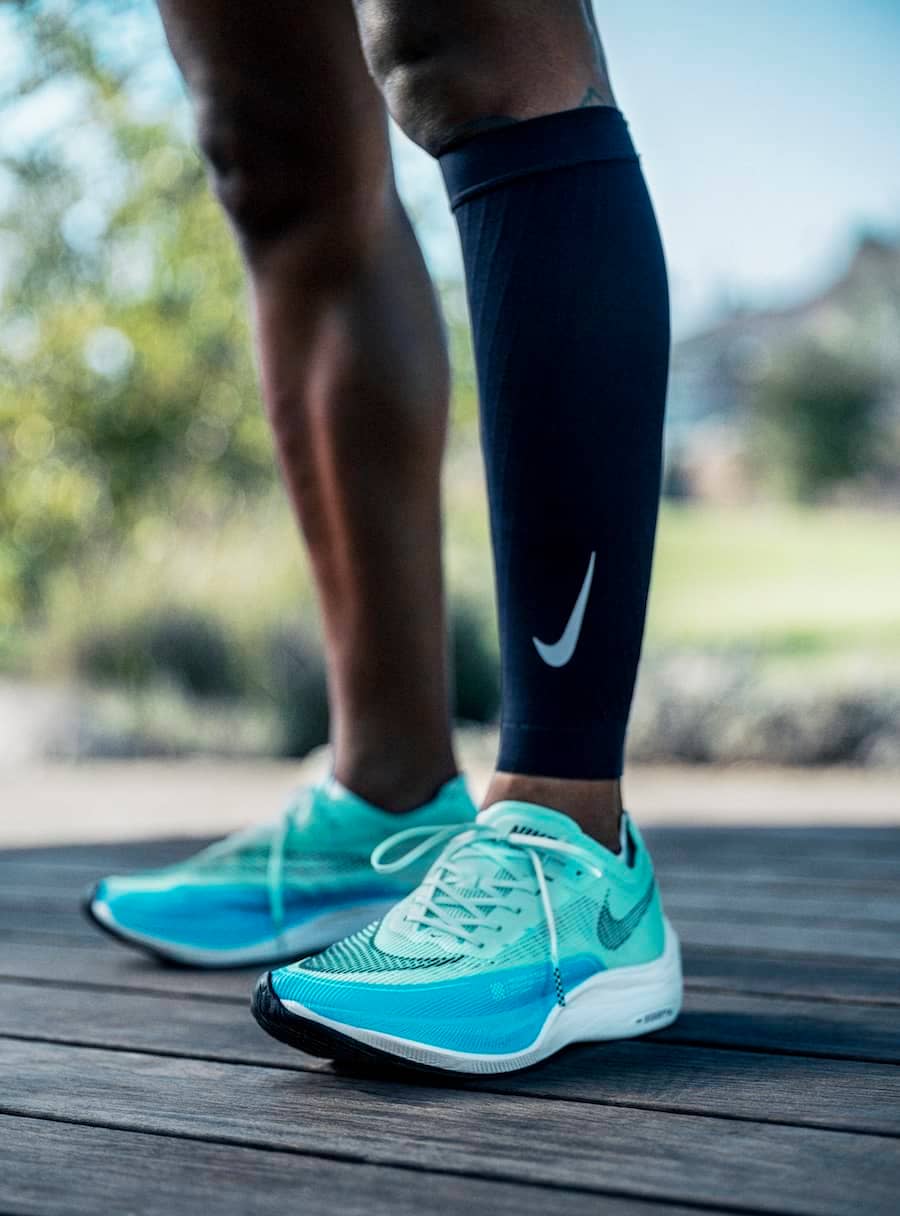3 Things to Consider When Choosing a Calf Compression Sleeve
Buying Guide
Calf compression sleeves are a runner’s best kept secret. They can help improve performance, relieve pain, and assist in recovery between sessions.

Running is far from an injury-free sport. In fact, an October 2004 study in the British Journal of Sports Medicine found as many as 79 percent of runners get injured in a six-month period. The most common injuries were calf strains, calf pain, and shin splints.
Taking care of your body prior to, during, and after each and every training session is key to avoiding injury. That means, warming up properly, wearing the right gear and shoes, or recovering fully between workouts.
Wearing calf compression sleeves may also help reduce your risk of injury by offering an added layer of protection against impact. A March 2021 study in BMC Sports Science, Medicine and Rehabilitation found that wearing calf compression sleeves prevented injury recurrence and reduced symptoms of a current injury for endurance runners.
What Are Compression Calf Sleeves For?
Compression calf sleeves are elasticated sleeves that provide gradual compression from the ankle, up the calf, to the knee. This helps improve blood flow and circulation, reduce swelling, support the muscles, and aid recovery.
During exercise, the heart pumps oxygenated blood and nutrients to the working muscles. Once used, the blood and waste products like lactic acid flow back to the heart to be oxygenated, and the cycle repeats. Calf sleeves with a graduated compression fights the effects of gravity to assist in venous return and lactic acid removal.
Unlike buying a pair of running shoes or tights, it can be difficult to know which size compression sleeve will fit you. The following pointers will help guide you to your perfect fit.

How to Choose a Calf Compression Sleeve
1.Measure
A calf compression sleeve isn’t related to the size of your feet or the length of your legs. The best way to ensure an accurate fit is to measure the circumference of your calf.
Grab a tape measure and wrap it around the widest part of your calf. This will give you the circumference. Once you have this number, go on the Nike Size Guide for Calf Sleeves to match your measurement to a size ranging from small to extra large.
2.Focus on the Fit
Compression sleeves should fit snug to the skin. If they feel loose, they won’t provide compression and thus, won’t be effective.
When you first put them on, they may feel tight, but they shouldn’t be so tight that they restrict your movement. As a general rule, if you get any pain or numbness from the sleeve, it’s too tight.
3.Opt for Moisture-Wicking
Moisture-wicking fabrics like Nike Dri-FIT will pull sweat and moisture from the surface of the skin and disperse it across the fabric's surface for faster evaporation. This breathable fabric will keep you comfortable and dry for the duration of your workout.
Tip: For added support, pair your compression calf sleeves with compression socks, shorts, tights, or shirts, depending on what you need.